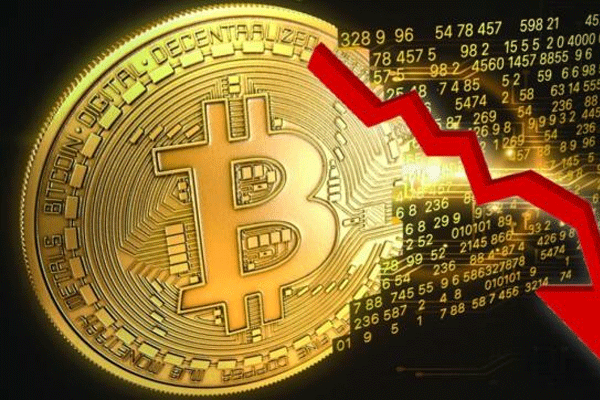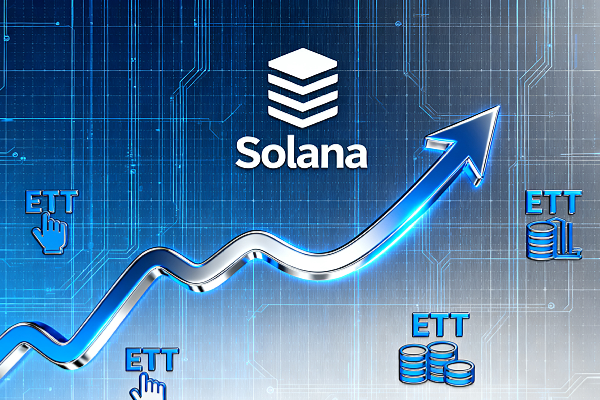Looking back at Trump’s first 100 days in office, crypto markets gain and lose

It’s been 100 days since Trump returned to the White House, a period of turmoil, uncertainty and confusion in global markets.
Crypto markets were hopeful when Trump was re-elected. However, despite some major Bitcoin-positive announcements since Trump took office, crypto investors have been disappointed.
Just before the inauguration, Trump released the official token $TRUMP, which was met with enthusiasm and controversy. Some critics believe that the move is a clear conflict of interest and may even threaten national security.
$TRUMP has fallen 82% from its all-time high of $75.35 on January 19. But $MELANIA has performed even worse, plummeting nearly 97%.
After Trump entered the White House, people speculated that Trump would sign a series of executive orders supporting cryptocurrencies on his first day in office, including the establishment of a strategic Bitcoin reserve. But these orders did not come out. On January 20, Bitcoin soared to a record high of $109,000 and has never returned to this level since then.
Trump did quickly deliver on some of his campaign promises made at the Bitcoin 2024 conference in Nashville. Ross Ulbricht, the founder of the darknet market Silk Road, received a full and unconditional pardon. Photos circulated online showed him smiling for the first time after being released from prison after 11 years. Sam Bankman-Fried (SBF) was also reportedly lobbying for a pardon, but that has yet to materialize.
Meanwhile, several Bitcoin-friendly members of Trump’s cabinet were quickly confirmed by the Senate. They included Treasury Secretary Scott Bessent, who once declared: “Crypto is about freedom, and the cryptocurrency economy is here to stay.”
Others faced intense scrutiny. Commerce Secretary Howard Lutnick was heavily criticized during his confirmation hearing, but downplayed issues about his company’s relationship with the Tether stablecoin.
The White House appointed David Sacks as the first AI and cryptocurrency “czar.” Before taking office, he sold his holdings of BTC, ETH, and SOL. The appointment won widespread praise, even from Trump critic Anthony Scaramucci, founder of Skybridge Capital.
In addition, Trump's businesses are increasingly involved in the field of digital assets, with Trump Media and Technology Group accumulating huge cryptocurrency reserves and launching a series of exchange-traded funds (ETFs).
For Trump, there is a simple rule, that is, always be prepared for the unexpected. As early as March 2, Trump suddenly announced on Truth Social that he intended to create a "US Crypto Reserve" containing XRP, Solana and Cardano. As soon as the news came out, the prices of these altcoins soared sharply, some of which rose by as much as 70%. However, BTC and ETH were not mentioned in the initial post, but subsequent supplementary statements emphasized that these two flagship digital assets would also "be at the core of the reserve."
Once the news that BTC would be lumped in with other altcoins came out, it quickly sparked heated discussions, with experts calling the proposal "ridiculous" and "chaotic." Concerns were also raised about the feasibility of the plan, fearing it would likely require congressional approval to get off the ground, and that specific details were sparse, with no announcements about how the funds would be allocated, where the reserve would be funded, or when it would take effect.
All of these questions ultimately became irrelevant. Trump did a U-turn and quickly signed an executive order to establish the Strategic Bitcoin Reserve as originally planned — along with other cryptocurrencies.
While this marked one of the biggest adoption milestones in Bitcoin’s history, BTC sold off sharply as investors digested the news. Why? Because the executive order states that no new BTC may be purchased for the reserve, other than those seized from criminals, unless the acquisition can be done in a way that does not affect the budget. This is also bad news for XRP, SOL, and ADA, as the U.S. does not currently hold any of these tokens.
Bitcoin supporters had been widely expecting the U.S. to become a significant buyer of Bitcoin — and to achieve Senator Cynthia Lummis’s ambitious goal of accumulating 1 million Bitcoins in five years. But using taxpayer money to do something like this would be extremely hypocritical, especially given Musk’s commitment to drastically cut federal government spending.
According to Arkham Intelligence, there are currently about 198,000 bitcoins in the U.S. wallet, worth about $18.8 billion. But as JAN3 CEO Samson Mow pointed out, the actual size of the U.S. strategic bitcoin reserve may be much smaller — because 95,000 of them will eventually be returned to Bitfinex. However, Mow is not pessimistic about this, and he believes that the significance of Trump’s policy is still “significant” because it will encourage other major economies to follow suit.
Shortly after Trump announced the establishment of the Bitcoin reserve, on March 7, the White House held its first cryptocurrency summit, attended by industry giants including MicroStrategy’s Michael Saylor and Coinbase’s Brian Armstrong. But the outside world has mixed reviews on the summit, with some analysts believing that “it is more like a political stage than a meaningful policy forum.”
However, investors have more difficult issues to deal with. Trump faces accusations of deliberately suppressing the stock market, thereby forcing the Federal Reserve to lower interest rates. The S&P 500 and tech-heavy Nasdaq 100 were hammered, and the tight correlation between the two meant that the sell-off in Bitcoin was even bigger.
The situation was compounded after “Liberation Day,” when the president announced sweeping and punitive tariffs on some of America’s closest trading partners, causing a sharp increase in the cost of imported goods. Bitcoin fell to around $80,000 in early April as the likelihood of a recession rose and the war of words between Washington and Beijing escalated.
Bitcoin was at risk of falling below $75,000, a 30% discount to its all-time high on Inauguration Day. But Trump’s confirmation of a 90-day suspension of reciprocal tariffs on most countries, while tariffs on China were raised again to 145%, temporarily brought some relief to the market. Optimism was further fueled when smartphones and computers were exempted from these aggressive trade policies. However, the White House’s constant back-and-forth has left investors anxious and exhausted, and many are now reducing their holdings of US assets and investing in gold instead.
It’s nearly impossible to keep up with the constant stream of news coming out of Washington these days. As all this is happening, Trump has stepped up his attacks on Federal Reserve Chairman Jerome Powell — posting on Truth Social, “The sooner Powell is fired, the better!”
While presidents generally don’t have the power to fire the heads of independent federal agencies, a Supreme Court case could change that precedent, allowing Trump to start meddling in the Fed’s affairs. Critics from across the political spectrum worry that this could lead to another market rout, with the S&P 500 briefly teetering on the brink of a bear market.
One key appointment that was slightly delayed was the confirmation of SEC Chairman Paul Atkins, who was chosen to replace anti-crypto Gary Gensler. That appointment was finally made last week, and one of his first tasks will be deciding whether to approve an ETF tracking altcoins like XRP.
Meanwhile, while $TRUMP’s price has been tumbling, the team behind it has come up with a novel way to attract attention. They are hosting an “exclusive” dinner for the 220 people who hold the most of the token, sparking a hoarding frenzy between now and May 12. The value of $TRUMP surged 64% on the news.
But some on crypto Twitter were upset, calling the dinner “a trap to dump and take more profits from people who bought in due to FOMO.” One analyst urged those who bought $TRUMP at the highs to get out as soon as possible.
Bitcoin is down 12% over the past 100 days, while the S&P 500 is down 8.6%. The threat of tariffs lingers. A new CNN poll shows that 59% of Americans believe Trump’s policies have made the U.S. economy worse. About 60% believe he has exacerbated the cost of living crisis, and more consumers are worried that a recession may be imminent.
Meanwhile, expectations that Bitcoin will hit new highs this year are fading fast. On the Polymarket platform, only 67% of people believe that Bitcoin will break through $110,000 by the end of 2025, while the probability of breaking through $120,000, $130,000 and $150,000 has dropped to 54%, 40% and 30% respectively. In January of this year, these targets were considered quite conservative expectations, which shows that the situation is changing rapidly.
Trump's political volatility and impetuosity make it almost impossible to predict what will happen next week, let alone next month or next year. This makes predicting the future trend of Bitcoin even more difficult. Those bold and confident price predictions should be treated with caution.
The past 100 days have changed dramatically, but there are still 1,361 days to go.









